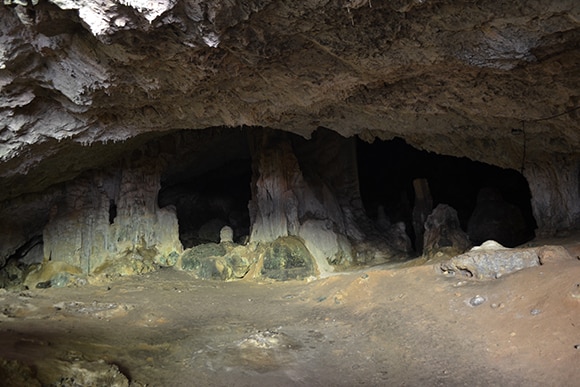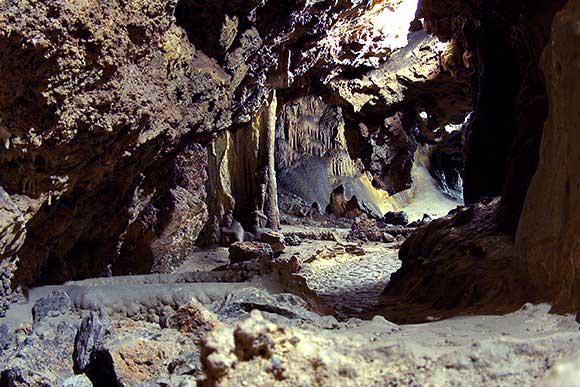
Caves
The caves of Kythira are many, small and unique.
Yiannis Petrochilos and his wife Anna, discovered the most of them.
Caves in Kythira
An island with rich geomorphology could not have enough caves. The cave experts Yiannis Petrohilos and his wife Anna were the first to explore the caves of Kythira, as well as caves in the Greater Greece, such as Dirou in Mani.
The most beautiful and largest cave of Kythira is that of Agia Sophia Mylopotamos and is located on the west coast of the island. A cave with a great tourist route, stalactites and stalactites, is visited by thousands of visitors each year.
The island still has two caves bearing the same name. These are the cave of Agia Sophia outside the village of Agia Pelagia and the cave of Agia Sophia in Kalamos. A folk tradition tells us that the caves of Mylopotamos and Kalamos were communicating, and that a cat was once enclosed in the cave of Mylopotamos and she, after days, went out to the Kalamos cave!
Cave Housti in Diakofti is one-roomed and has dimensions of about 35 by 20 meters. In the summer of 1998, a multi-year excavation research began, which brought to light important findings such as the Neolithic and Early Helladic shells (5000-2200 BC), Archaic to Roman and post-Byzantine times.
In the cave in Katafygadi (mount Mermigari), ceramic shells from the Minoan and Mycenaean era have been found.
The shores of Kythera also hide many submarine caves, which can be explored with diving equipment. One of the most impressive caves that attracts the interest of the visitors of Kythera is that in Chitra, the rocky island south of Kapsali. You can visit it by boat and dive into its cool waters. The best time is in the afternoon, as the sun setting lights up the bottom and creates a visual feast!





Leave your comment
You must be logged in to post a comment.